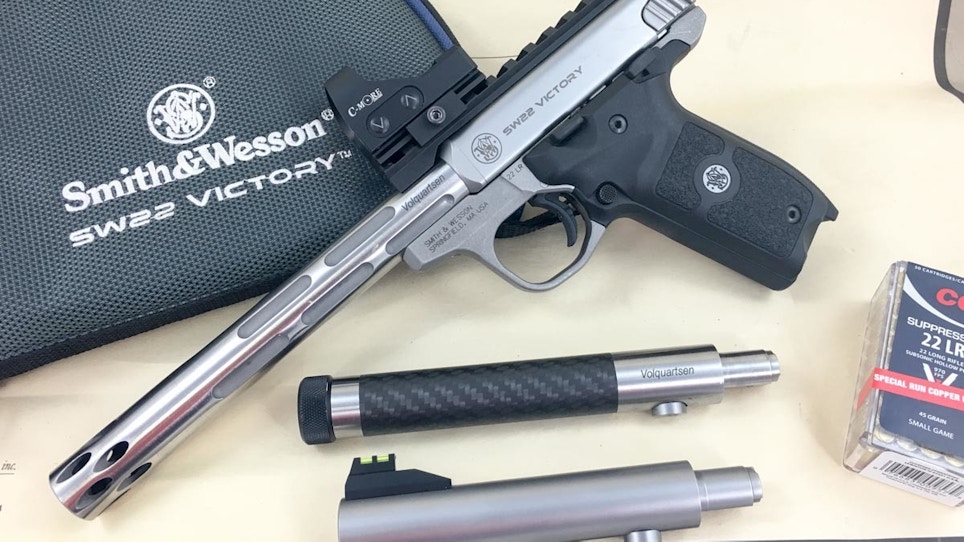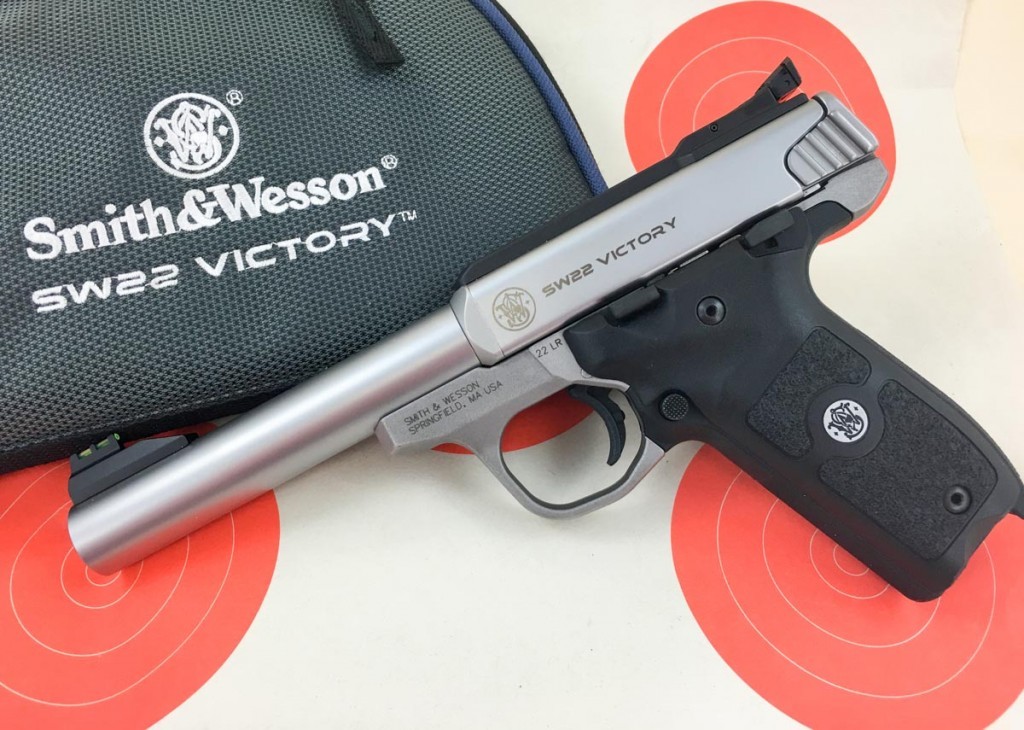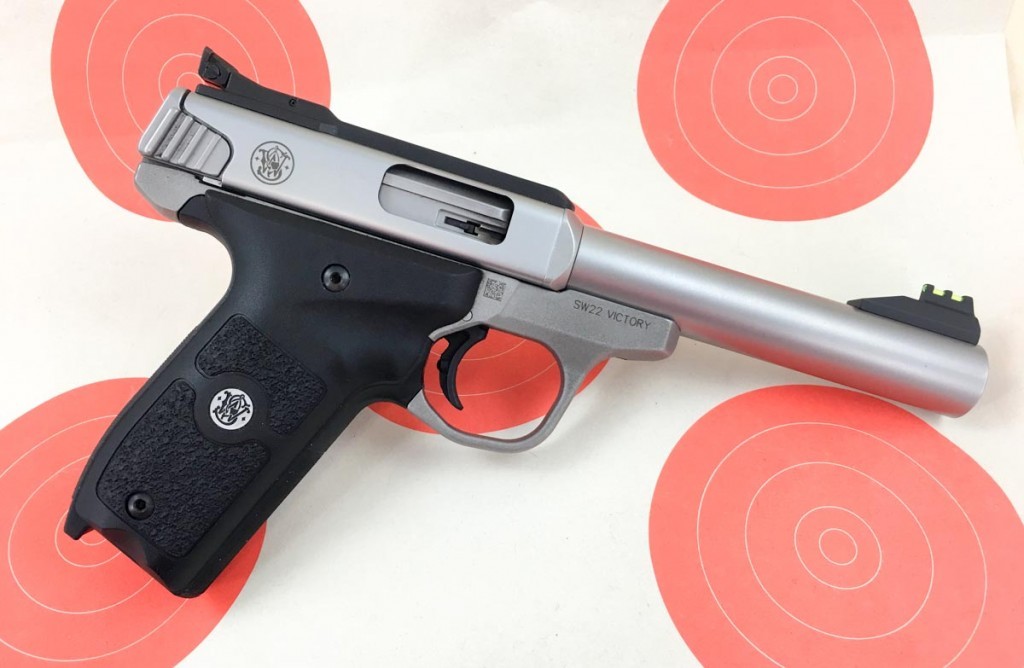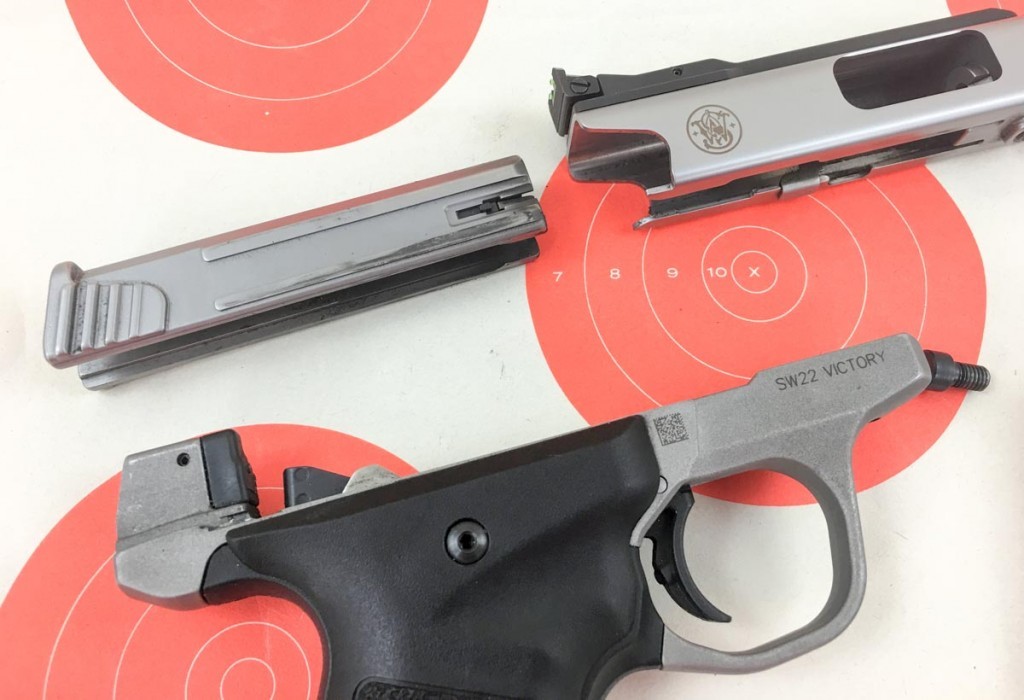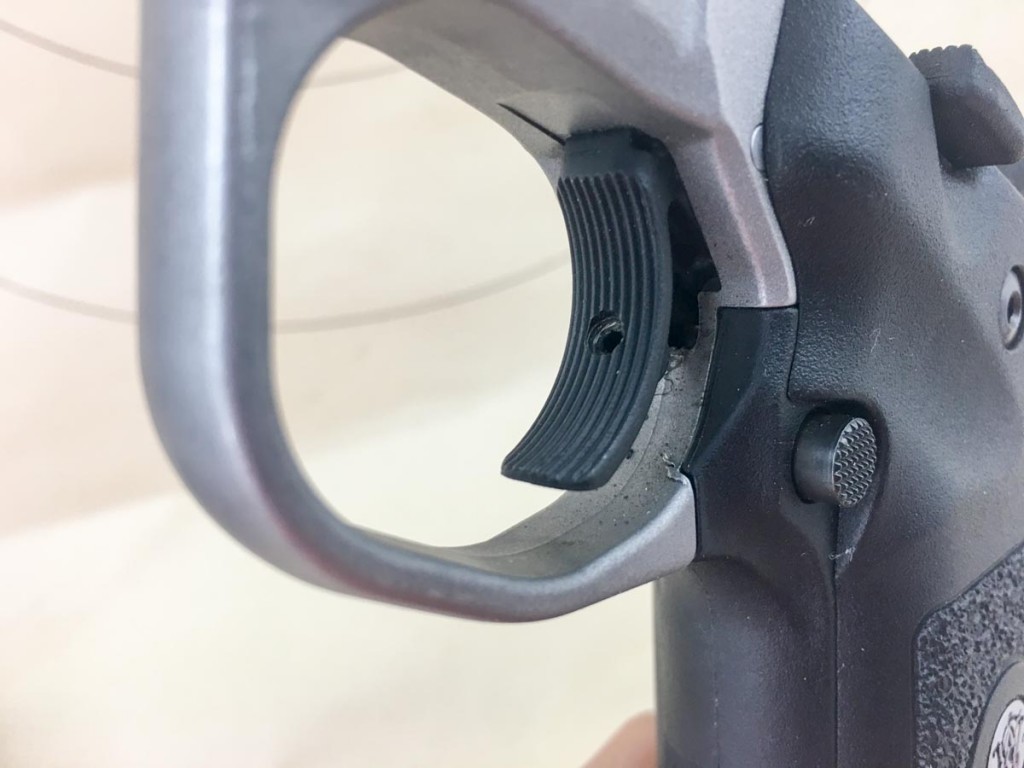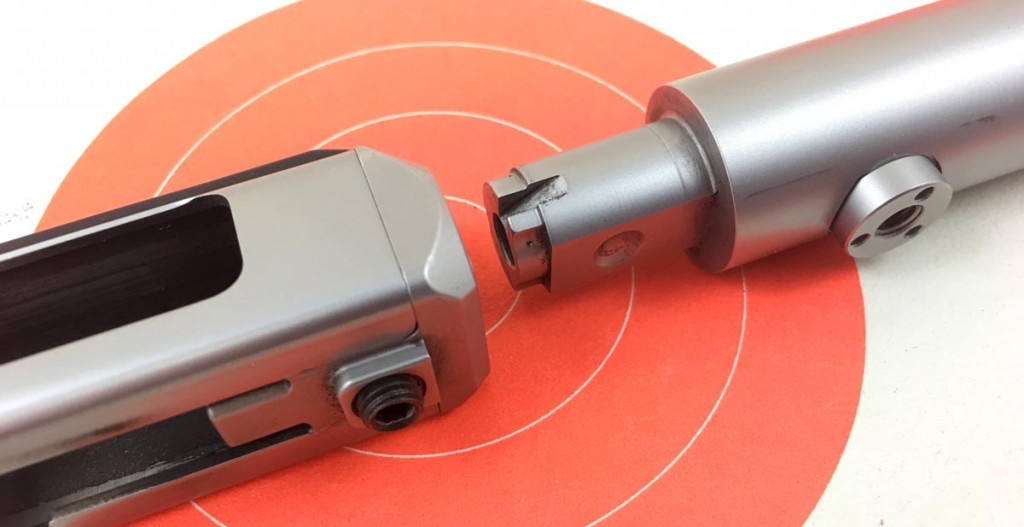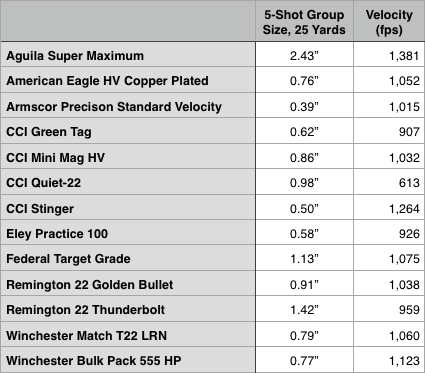Here’s the problem with Smith & Wesson’s new SW22 Victory pistol. I can’t keep it in the same configuration for more than about seven minutes. Fortunately, I’m not the only one suffering from .22 Pistol “Tinkeritis.” While that may sound scary in terms of customer support, it’s not. In fact, this pistol is built to encourage add-on sales.
To understand the overwhelming urge to customize and configure this new gun, you have to understand the design. At the secret unveiling at the Smith & Wesson Training Academy, after signing pages of legal documents promising secrecy under threat of eternal banishment from the industry, Smith & Wesson Vice President of Marketing, Paul Pluff flashed a picture of the new SW22 Victory pistol on the wall. I only speak for myself, but I swear I heard other yawns from the rest of the room - the picture was of yet another .22 semi-automatic pistol. The grip looked eerily similar to that on a Model 22 Sport Series. The photo showed a stainless gun with fiber optic sights and a bull barrel. It looked nice, but we didn’t fall out of our chairs.
But then a strange thing happened, and the room suddenly woke up from their New England winter weather induced coma. Scott Volquartsen, President of Volquartsen Custom, started passing out high-tech pistol barrels to the attendees. The Blue Heron PR folks started distributing optics and leather holsters. It quickly became apparent that there was a lot more to this pistol than the photo implied. With a knowing smile, Paul started to show us how to disassemble the new SW22 Victory and the mood of the room changed dramatically.
You see, the new SW22 Victory pistol is made for add-on sales. It’s designed from the ground up to accept aftermarket barrels, grips, and sights - just for starters. A single Allen screw just forward of the trigger guard separates the grip and frame from the barrel and upper receiver. Loosening a second internal Allen screw allows you to remove the barrel from the receiver. A third screw secures the entire rear sight assembly.
With a grand total of two Allen wrenches and about thirty seconds, you can swap barrels, add a Picatinny rail, or replace the grips. Moments after our sample guns were handed out, the room stopped listening to Paul’s presentation because we were busy reconfiguring guns to each of our personal preferences. Who needs instructions, right?
The modular design offers big benefits even if one uses the pistol as is. Unlike many .22 pistols on the market, this one is a snap to take down and clean. As described, the barrel, bolt and interior of the receiver are easily accessible with the removal of one screw. No small parts, no complicated procedures and certainly no parts left over when you try to put it back together. Ten seconds of takedown is all that’s required for a thorough cleaning. You might wonder, with this Lego-like modularity, will this gun shoot? The short answer is… yes. Amazingly well in fact, but we’ll get to that in a minute.
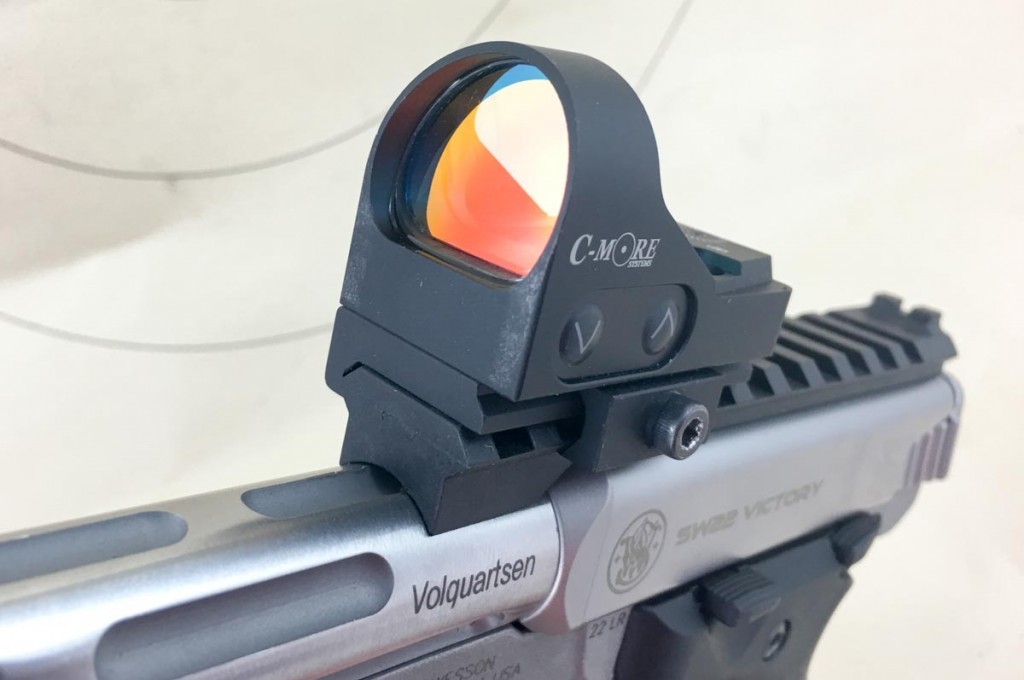
The Victory includes a rail to mount optics. Note the notch in the rear - the rail works with the front sight also.
First, let’s take a closer look at this pistol. With the exception of the grips, it’s made of stainless steel, so it’s got some heft, and that’s a good thing. The Victory’s 36 ounces of steel, combined with .22LR chambering, means recoil is non-existent. When you add a silencer, I swear the gun actually moves forward when fired. It’s one of those guns that's great for newer shooters, but experts will appreciate it too.
The barrel is 5.5 inches long with an external diameter of .86 inches. You’ll notice a beautifully machined inset crown area that will protect the muzzle against accuracy-robbing dings or drops. Topping the barrel is a fiber optic tube sight mounted on an aluminum base. The entire base is removable if you prefer to go with an optics only approach and want to keep the muzzle clean of obstructions. The rear sight contains a U-shaped green fiber optic tube mounted on an aluminum base. It’s adjustable for both windage and elevation with small flat-head screws. While we’re talking about the rear sight, you’ll note that it’s mounted on a four-inch long base. That’s important as the rear sight assembly is modular also. In the box, you’ll find a five-inch Picatinny rail segment that is interchangeable with the rear sight assembly. Want optics? No problem, just swap the rear sight base with the rail segment and mount whatever you like. Smith & Wesson thoughtfully cut a rear sight notch right into the rear of the rail. If you prefer black rear sights instead of the fiber optic version, just use the rail segment instead.
The SW22 Victory is a single-action, internal hammer design, so you’ll find a frame-mounted safety on the left side. It’s a steel lever covered with polymer to smooth the rough edges and provide a little extra gripping surface. Forward of the safety is a slide lock/release lever, also steel with a polymer cover. The grip panels are removable, each attached with two hex screws, much like you’ll find on a 1911 pistol. I’m already hearing that companies intend to release aftermarket wood grips for the SW22. I’ll bet a nickel that we’ll see something along those lines from Volquartsen before too long.
The Victory trigger is fantastic. My early production model measures exactly three pounds. A short, even take up movement is followed by a crisp break. Out of the box, there was no discernible over-travel, but there’s an adjustment screw on the trigger face if you want to adjust to preference. There is a magazine disconnect safety, but in the interest of avoiding trigger movement interference, the Smith & Wesson folks have placed that at the base of the magazine well.
The operating system is a lesson in simplicity. Removal of the single takedown screw forward of the trigger guard allows you to separate the receiver and barrel from the frame. At this point, the bolt simply slides out of the receiver and you have unrestricted access to whatever you want to clean. The recoil spring is even captive so there is virtually no risk of losing parts or reassembling incorrectly.
From initial offhand shooting, it was readily apparent that this pistol would shoot far better than I could see, so I decided to call out the heavy optics to get maximum possible sighting precision. Consulting with the folks at Bushnell, I figured that a Bushnell Elite 3500 Pistol Scope would do the job nicely. With variable 2-7x zoom and a 32mm objective, it would give me a plenty good sight picture. I quickly swapped out the default rear sight for the included top rail and mounted the scope.
I ran about a dozen varieties of .22LR ammo from various manufacturers through this gun, with its factory bull barrel installed. From 25 yards, I fired a veritable slew of 5-shot groups from a solid sandbag rest.
The short answer to the “will it shoot” question is… yes! As you can see, even regular bulk .22LR ammo will shoot incredibly well with this pistol in it’s out of the box configuration. When I started seeing sub ½-inch five-shot groups from 25 yards, I figured I’d better move to 50 or 100, but it was windy, so I stuck with a more reasonable range for the rest of my testing.
I put several hundred rounds of .22LR through this gun while at the launch event at the Smith & Wesson Training Academy before it was shipped, still uncleaned, to me here for additional testing. A thousand rounds later, it was still running like a champ. Unlike most .22LR pistols, this one seems to eat everything without fail. I’ve yet to find a brand of .22 LR ammo that it doesn’t feed reliably.
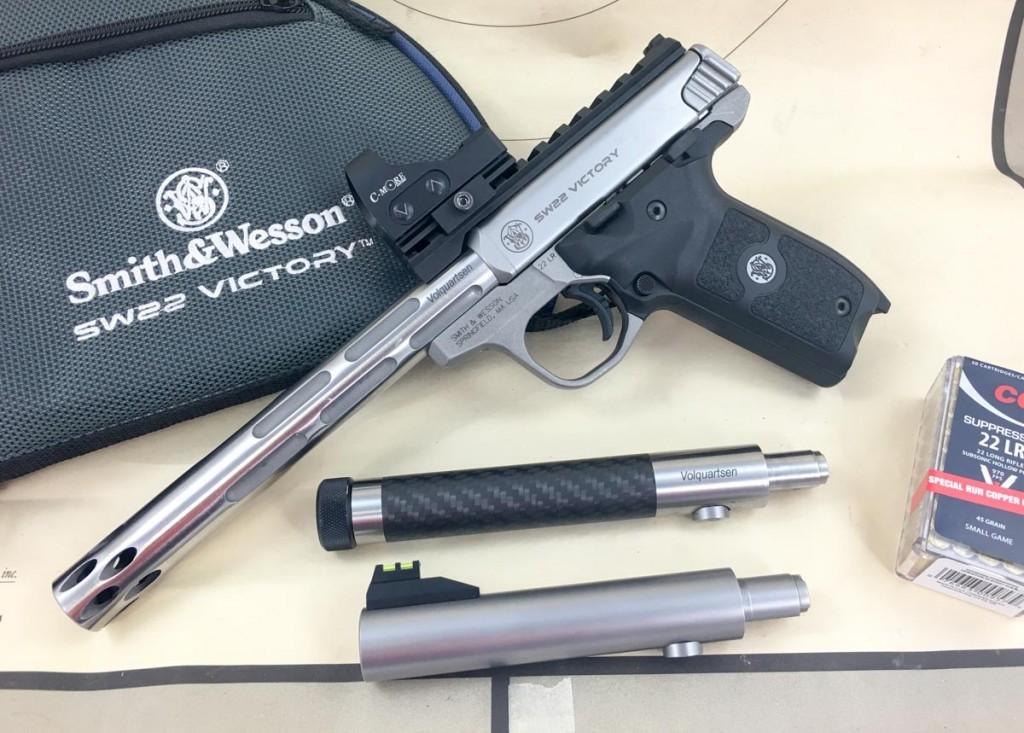
Installation of an aftermarket barrel like these two Volquartsen models is a piece of cake. The factory barrel is on the bottom.
As I mentioned in the beginning, Volquartsen has already produced aftermarket barrels for the SW22 Victory. At press time, Volquartsen had produced the carbon fiber and stainless steel I-fluted barrels, both of which are threaded and suppressor ready. The Volquartsen barrels shown here are pre-production and vary slightly from the retail models, so check with Volquartsen for the final specifications. Triple K offers a leather trail holster complete with a top strap and pouch for the second magazine. Of course, nearly any optic will mount on the standard rail, so possibilities there are endless.
I’m enamored with this pistol and I’m betting it’s going to be a winner. As seeing is understanding, it’s a good idea to display the Victory in a couple in different configurations with aftermarket parts. If you sell Class III, put one on the shelf with a suppressor - that’s an irresistible combination.
Three Victory Models
Initially, Smith & Wesson will offer three different configurations of the Victory pistol. All will share the same basic specifications unless otherwise noted here.
Base Model
The base model sports a 5.5-inch stainless steel, match grade bull barrel with a recessed muzzle crown. It includes fiber optic front and rear sights, two 10-round magazines, and the rail segment that can replace the rear sight base to mount optics.
SKU 108490
Threaded Barrel Model
Smith & Wesson offers the Victory in a factory threaded barrel option. All other features are identical with the exception of 1/2x28 tpi threading and a thread protector. The barrel is still 5.5 inches long, so the front sight is moved slightly back to allow space for threading.
SKU 10201
Kryptek™ Highlander Finish Model
Identical to the base model, the Kryptek Highlander version features a camo finish instead of brushed stainless steel on the frame and barrel surfaces.
SKU 10297
Specifications
Action: Single-action blowback
Caliber: .22 Long Rifle
Capacity: 10+1 rounds
Barrel: 5.5-inch, 1:15 twist rate, 6 groove, right-hand twist, 410 heat-treated stainless steel
Overall Length: 9.2"
Height: 5.6"
Width: 1.3”
Weight: 36 ounces
Front sight: Green fiber optic with aluminum base
Rear sight: Green fiber optic tubes, adjustable for windage and elevation, aluminum base
Sight radius: 8.2"
Trigger: Metal trigger with a grooved face and adjustable stop, three pound pull weight
Frame: 416 stainless steel, brushed finish
Slide: 416 heat-treated stainless steel
In the box: Two 10-round magazines, polymer Picatinny rail with rear sight notch
MSRP: $409
